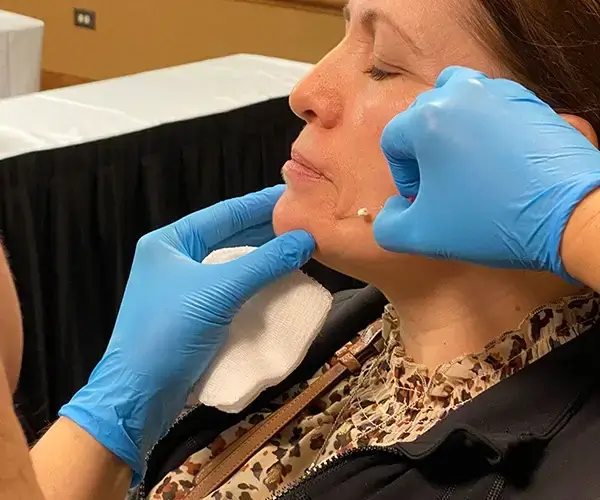Who Can Perform Thread Lifts?
By Dr. Stephen Cosentino
PRESIDENT OF EMPIRE MEDICAL TRAINING
One of the fastest-growing segments of aesthetic medicine is thread lifting, specifically PDO thread lifts. This minimally invasive procedure is really a collection of different procedures that can treat a wide (and growing) variety of cosmetic complaints, including marionette lines, drooping eyebrows, abdominal skin laxity, and more.
If you operate or work at a cosmetic medicine practice, you’ve probably encountered questions about thread lift procedures: who’s a good candidate, what are the side effects, how long is the recovery time, and whether the procedure requires general anesthesia or just local anesthesia.
But the most important question of all from your perspective as a provider is: Who can actually perform thread lifts? That’s the question we’re going to answer today.
Who Can Perform Thread Lifts?
Any trained and licensed medical provider can work with PDO threads. Unlike traditional plastic surgery, thread lift practitioners don’t require board certification from the American Society of Plastic Surgeons. Depending on the regulations in the state where they practice, eligible providers may include:
- Plastic surgeons
- Other MD and DO specialists, including internists, family practitioners, and dermatologists
- Dentists and oral surgeons
- Nurse practitioners and physician assistants, though they may be required to work under the supervision of a board-certified physician or surgeon
- Registered nurses, who also may require supervision by a physician or surgeon
Before going any further, contact your state medical licensing board (or visit its website) to determine whether you can perform thread lifts in your area.
How to Become a Thread Lift Specialist
Once you’ve confirmed you’re eligible to perform thread lifts in your state, you’re ready to seek training. Look for a comprehensive thread lift training course that covers the following:
- Thread lift prerequisites: This should include written and video training materials covering the medical basis for thread lift procedures, including how they stimulate collagen production and the body’s natural healing response. Complete them before you arrive for training so that you’re fully prepared for the hands-on portion.
- Smooth thread training: This portion of training covers smooth threads, which stimulate collagen and help add volume to the face and neck (often in combination with dermal fillers). Some programs split smooth thread training into a separate “Level 1” module.
- Lifting thread training: Sometimes described as “Level 2” threads training, this portion covers thread lifting procedures in detail: how to insert the threads using a thin needle, how to avoid pulling or otherwise damaging skin, how to cut and tie threads, and much more.
- Live hands-on patient training: The best thread lift training programs offer hands-on training with real, live volunteers. You’ll have the opportunity to practice thread lift techniques here and must demonstrate proficiency to pass the course.
- Patient intake and management: Your training should also cover patient intake and management. You’ll learn how to rule patients in and out based on their medical status and cosmetic complaints, set realistic expectations for treatment, and provide guidance on keeping treated areas clean and watching for side effects.
Finally, be sure to choose a course that offers official certification and continuing medical education credits upon successful completion. This is an important mark of quality training.


